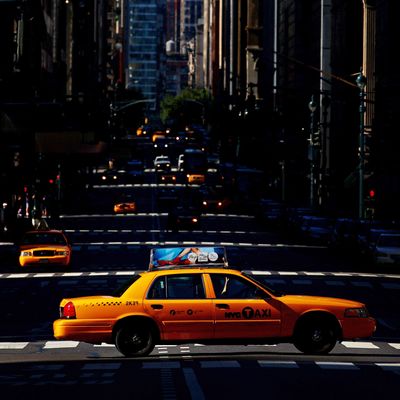
It’s been a roller-coaster week for Uber, the San Francisco–based order-a-ride app. Earlier this week, a judge removed the last barrier to the company’s plan to offer “e-hail” taxi service in New York, which would allow yellow cabs to pick up passengers through a smartphone app. Then, the next day, an appellate judge put that barrier back in — cutting off the e-hail program 24 hours after it had begun.
I expected that Uber would prevail in this fight, if only because the e-hail program has been a pet project of Mayor Bloomberg and Taxi & Limousine Commissioner David Yassky for quite some time. So the quick about-face surprised me. But it’s a bit more understandable once you comprehend the entrenched political forces Uber is going up against, and how deep the beef runs between the constituencies involved.
To back up a bit: As it stands, there are two kinds of cars for hire in New York — black cars, which are currently forbidden from picking up passengers on the street, and yellow cabs, which are forbidden from prearranging trips with passengers.
The trade organizations representing both types of cars have a history of ugly battles. Last year, when Mayor Bloomberg proposed a program that would allow black cars to pick up street hails in the outer boroughs, yellow cab organizations threw a fit, arguing that the program would dilute the value of their taxi medallions by introducing a bunch of new licensed taxis to the market. The campaign worked, and the street-hail program got nixed by a judge.
Now the black car lobby has gotten its comeuppance against its yellow rivals by putting a stop to a twelve-month pilot program that would allow people to hail yellow cabs from their smartphones, effectively giving New Yorkers the same cab-hailing abilities as people in San Francisco, Washington D.C., and other cities.
The Black Car Assistance Corporation and the Livery Roundtable, two of the black car trade organizations that filed the lawsuit against the pilot program (which you can read in full here), claim that allowing people to get taxis on their smartphones will lead to discrimination, since drivers could theoretically choose whether or not to accept fares based on where they originate. (As an example, the complaint asks us to imagine “a driver on the Upper East Side who decides not to accept an e-hail from Harlem.”)
Discrimination isn’t the real reason the black car lobby opposes yellow cab e-hails, of course, just like the “home-rule message” technicality that the yellow cars used to stop the outer-borough street-hail plan wasn’t the real reason for last year’s opposition campaign. In both cases, what each side fears is losing business. Black cars see Uber Taxi as a threat to their profitability, since every prearranged yellow cab is one fewer passenger in a black car. And, moreover, they see the pilot program as fundamentally unfair, in that it gives yellow cabs an advantage. If yellow cabs are legally allowed to pick up both prearranged fares and street hails, they ask, why shouldn’t black cars be able to do the same?
The black car lobby’s discrimination argument is fairly silly. Cabs are already allowed to choose where they go to look for fares, and any outer-borough resident who has approached a cab with its light on, only to have the driver flick on the Off-Duty light and drive away, knows that they discriminate all the time. (In fact, it’s possible that Uber would actually lessen the chance of discrimination, since drivers don’t see a face before agreeing to accept a hail — just a phone number and a location.)
The fairness argument is more compelling, since it’s true that if the city can bend existing rules to benefit yellow cabs, it should also be willing to help black car owners find fares.
A good solution, I think, would be to break down the line between yellow cabs and black cars altogether. Both kinds should be able to accept both street hails and prearranged fares, and both kinds should be able to arrange for rides over smartphone apps. That would be the best solution for passengers — who would have more supply on the market, no matter where in the city they live — and better for drivers, since they’d have more ways to look for fares. And while black cars might lose a little money, in aggregate, to yellow cab e-hails, they’d make up for it with the gains on outer-borough street hails.
Because this war is so deeply entrenched, it’s probably not possible for both sides to cave simultaneously. And so we have a series of lawsuits, each side grasping onto arcane technicalities to avoid saying flat-out what it is they’re afraid of — losing business to the other — while leaving New Yorkers with an antiquated two-tier taxi system that disadvantages the outer boroughs and lags behind cities like San Francisco when it comes to ease of use.
Uber will be fine, no matter how the appeals hearing on the e-hail issue turns out. It’s got huge operations in a number of domestic and international cities and doesn’t strictly need the business here. But unless the black car lobby is willing to be the first side of this fight to cave, the war between black and yellow will continue. It’s a classic case of a regulatory battle that has outstripped its original usefulness. And, at least for now, New Yorkers have been caught in the crossfire.





























